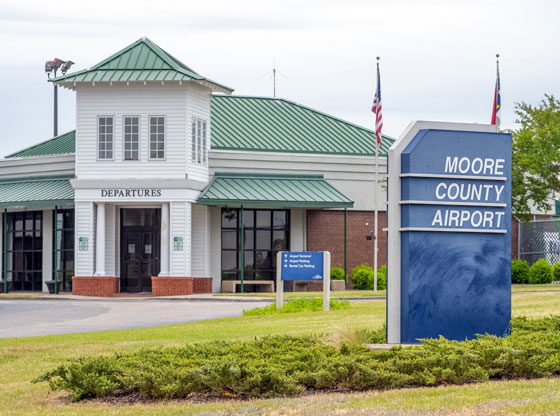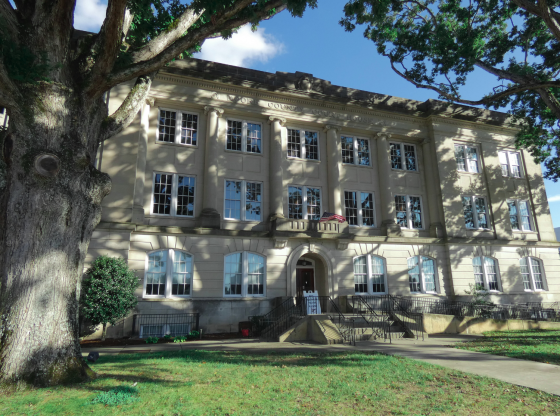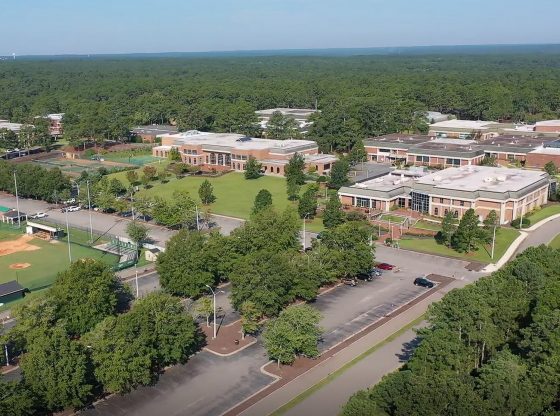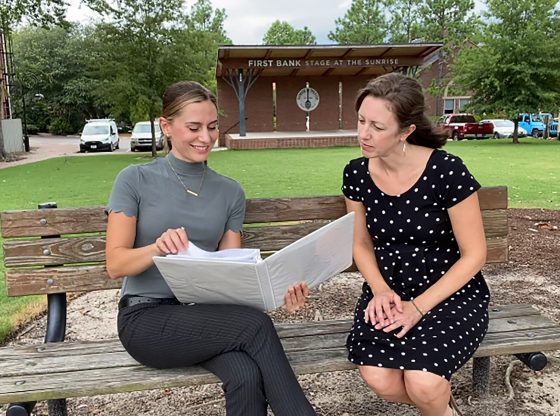The rise in golf-related corporate flights, demand for hangar space and the growth of privately owned aircraft were some of the topics of a joint meeting of the Moore County Airport Commission and the county commissioners Wednesday. With that growth in mind, the airport commission has undertaken a set of ambitious projects, according to a presentation by Airport Manager Scotty Malta.
“We consider ourselves a gateway into the home of American golf, and we will serve our region as the best general aviation airport in North America,” said Malta. “It is an amazingly lofty goal. We recognize that, but it is one that we strive for.”
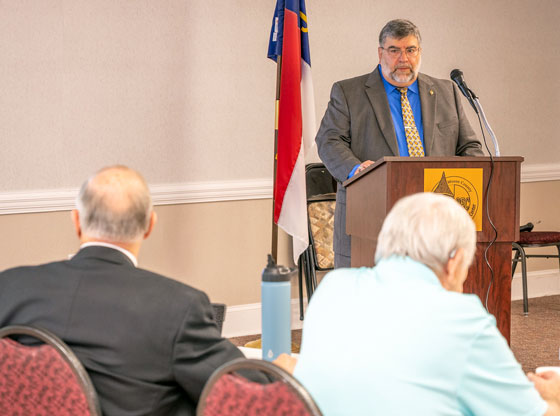
Moore County Airport Manager Scotty Malta makes a presentation on the state of the airport to a joint meeting of the Moore County Commissioners and the Moore County Airport Authority.
The airport brings in $2.7 million in revenue each year, just over the annual expenses of $2.5 million. “We are able to meet our needs of operating the airport but are short on funding some of the capital projects,” said Malta. “Despite COVID, our traffic has actually increased. As some freedoms in our county occurred, we started to see some pent-up demand of people wanting to come and golf and visit our great community.”
The publicly-owned airport, located in Whispering Pines, is classified as a regional airport. One of only 16 regional airports in North Carolina. The single runway sees 40,000 takeoffs and landings a year and is said to return $93 million annually to Moore County.
Regularly scheduled airline service ended in 2007. Since then, people wishing to fly commercially have needed to drive to Fayetteville, Raleigh, Greensboro or Charlotte.
To be undertaken this summer, the airfield lighting project will include the installation of new runway lighting. By switching from conventional lighting to light-emitting diodes (LED), safety is increased because of the higher illumination, and energy consumption is reduced. The project will cost $2.3 million and will be funded by grants from the Federal Aviation Administration (FAA) and the state of North Carolina.
The work, expected to take 30 to 45 days, will start in June and will require the runway to be closed at night for a portion of the project.
Runway and taxiway repairs are also on the FAA grant eligible project list. This type of work is 90% paid for by the FAA, with a 10% local match.
The airport collects revenue from the aviation fuel they sell, something managers want to sell more of. By using more of the runway, jets could safely take off with a full load of fuel and not need to stop at another larger nearby airport to top off before going to their final destination.
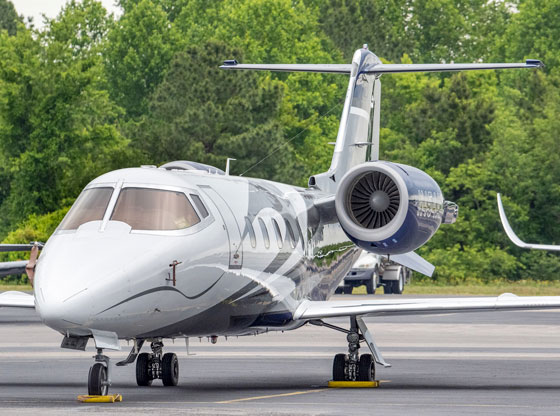
Jet airplane at Moore County Airport.
Another source of income is hangar space rental. Currently, the 85 spaces are entirely full with paying customers, with a waiting list of another 48. Adding two new sets of hangars are planned for this September. More hangars are on a long-term capital projects list.
After hearing that some of the existing hangars are in need of maintenance, county commissioners urged the airport commissioners to consider developing a capital improvement plan. Repairing hangar doors and replacing roofs was discussed as a short-term priority.
To meet the industry need for airplane mechanics, airport commissioners envision a school to teach the skills needed to repair and maintain planes and helicopters. Still in the early planning stages, a school located at the airport is thought to be a place for military veterans and those graduating high school to become certified and start a high-paid career.
As part of their community engagement program, the airport hosts events during the year such as the Festival d’Avion and the Sandhills Motoring Festival. They also partner with the Civil Air Patrol, Sandhills Flyers Club and the Boy Scouts on special activities. Moore County Airport is also an important component of the aviation program at Sandhills Community College.
 ~Article and photos by Sandhills Sentinel Reporter John Patota.
~Article and photos by Sandhills Sentinel Reporter John Patota.


